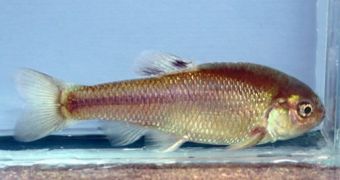The boom of the contraceptive pill use has "loaded the waters" with estrogen. The hormone is excreted in urine, passes through most wastewater plants and accumulates in streams and lakes.
As it is a natural organic chemical, many may neglect its effects, but researches show it can turn male fish into female.
A new large experiment shows this is more severe than previously thought: even very low estrogen levels in a lake can impair enough the reproduction of minnow populations to wipe them out in just 2 years.
Lab tests showed that chronic exposure to low doses of estrogen made males produce eggs in their testes and their secondary sex traits (darker coloration and tubercules on their noses) disappeared.
But the team led by Karen Kidd of the University of New Brunswick, Canada, made an experiment in a lake in western Ontario to see what this means in the wild. Each summer for 3 years, they poured into the lake 17?-ethynylestradiol (the active chemical in birth-control pills) in the same levels as those encountered in streams and lakes elsewhere.
In just a few weeks from the first doses, male minnows produced vitellogenin, a female egg maturing protein. In females, the increased estrogen levels in female boosted their egg production by 8 to 80 times, but somehow their development was slowed down.
The males delayed sexual development and minnows became increasingly rare; apparently, they did not reproduce anymore. In the second year, no fathead minnow nest was found. "We didn't expect to see such a dramatic and quick response," said Kidd.
The minnow population started recovering after more than 2 years of halting the estrogen pouring.
Other male fish, like suckers and trout, also had vitellogenin, but these species appeared much less affected, probably due to their bigger size and longer life spans. Still, chronic exposure could affect these species. "It is difficult to gauge the impact of estrogen on populations of fathead minnows across North America," said Kidd.
The species are still encountered in rivers contaminated with treated sewage, so it seems that some populations can withstand high estrogen levels. "Still, given the wide range of fish affected by estrogen, it would be prudent for cities to adopt modern treatment systems that remove up to 95% of the estrogen", said Kidd.

 14 DAY TRIAL //
14 DAY TRIAL //